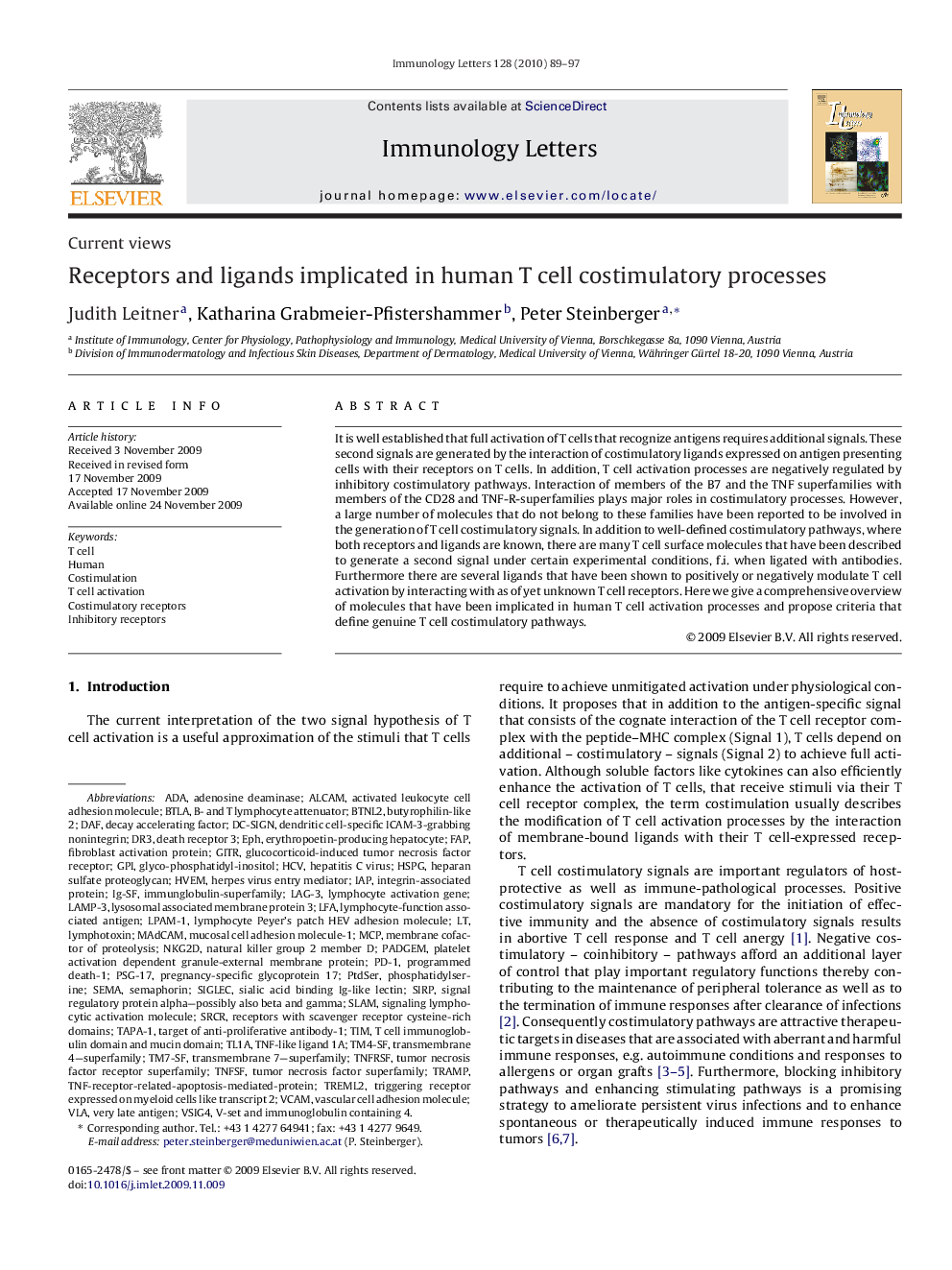| کد مقاله | کد نشریه | سال انتشار | مقاله انگلیسی | نسخه تمام متن |
|---|---|---|---|---|
| 6117496 | 1217220 | 2010 | 9 صفحه PDF | دانلود رایگان |
عنوان انگلیسی مقاله ISI
Receptors and ligands implicated in human T cell costimulatory processes
دانلود مقاله + سفارش ترجمه
دانلود مقاله ISI انگلیسی
رایگان برای ایرانیان
کلمات کلیدی
TL1AHSPGDC-SIGNNKG2DGITRnatural killer group 2 member DCostimulationTIMVLATNFRSFPtdSerDR3Vsig4LAG-3BTNL2SIRPTNFSFSRCRMAdCAMIg-SFMCPPD-1DAFLFAGPiBTLAIAPVCAMFAPHVEM - WHOadenosine deaminase - آدنوزین دآمینازSema - آسمانvery late antigen - آنتیژن بسیار دیرSLAM - اسلامهEph - افHuman - انسانTRAMP - ترامپtumor necrosis factor receptor superfamily - خانواده خانوادگی گیرنده فاکتور نکروز تومورT cell - سلول تیSemaphorin - سمفورینSiglec - سیگلکTumor necrosis factor superfamily - فاکتور نکروز تومور فوق فامیلیPhosphatidylserine - فسفاتیدیلسرینT cell activation - فعال سازی سلول TLymphotoxin - لنفو توکسینProgrammed death-1 - مرگ برنامه ریزی شده 1ALCAM - من ALCADEsignaling lymphocytic activation molecule - مولکول فعال سازی لنفوسیتیک سیگنالینگvascular cell adhesion molecule - مولکول چسبندگی سلولی عروقیactivated leukocyte cell adhesion molecule - مولکول چسبندگی سلولی لکوستیک فعال شده استHepatitis C virus - هپاتیت سیHCV - هپاتیت سیHeparan sulfate proteoglycan - هپارین سولفات پروتئگلیکانADA - وجود داردherpes virus entry mediator - ویروس تبخال ویروسیFibroblast activation protein - پروتئین فعال سازی فیبربلاستintegrin-associated protein - پروتئین مرتبط با انتگرینDecay accelerating factor - کاهش فاکتور شتاب دهندهGlucocorticoid-induced tumor necrosis factor receptor - گیرنده فاکتور نکروز تومور ناشی از گلوکوکورتیکوئیدdeath receptor 3 - گیرنده مرگ 3Inhibitory receptors - گیرنده های مهار کننده
موضوعات مرتبط
علوم زیستی و بیوفناوری
ایمنی شناسی و میکروب شناسی
ایمونولوژی
پیش نمایش صفحه اول مقاله

چکیده انگلیسی
It is well established that full activation of T cells that recognize antigens requires additional signals. These second signals are generated by the interaction of costimulatory ligands expressed on antigen presenting cells with their receptors on T cells. In addition, T cell activation processes are negatively regulated by inhibitory costimulatory pathways. Interaction of members of the B7 and the TNF superfamilies with members of the CD28 and TNF-R-superfamilies plays major roles in costimulatory processes. However, a large number of molecules that do not belong to these families have been reported to be involved in the generation of T cell costimulatory signals. In addition to well-defined costimulatory pathways, where both receptors and ligands are known, there are many T cell surface molecules that have been described to generate a second signal under certain experimental conditions, f.i. when ligated with antibodies. Furthermore there are several ligands that have been shown to positively or negatively modulate T cell activation by interacting with as of yet unknown T cell receptors. Here we give a comprehensive overview of molecules that have been implicated in human T cell activation processes and propose criteria that define genuine T cell costimulatory pathways.
ناشر
Database: Elsevier - ScienceDirect (ساینس دایرکت)
Journal: Immunology Letters - Volume 128, Issue 2, 16 February 2010, Pages 89-97
Journal: Immunology Letters - Volume 128, Issue 2, 16 February 2010, Pages 89-97
نویسندگان
Judith Leitner, Katharina Grabmeier-Pfistershammer, Peter Steinberger,